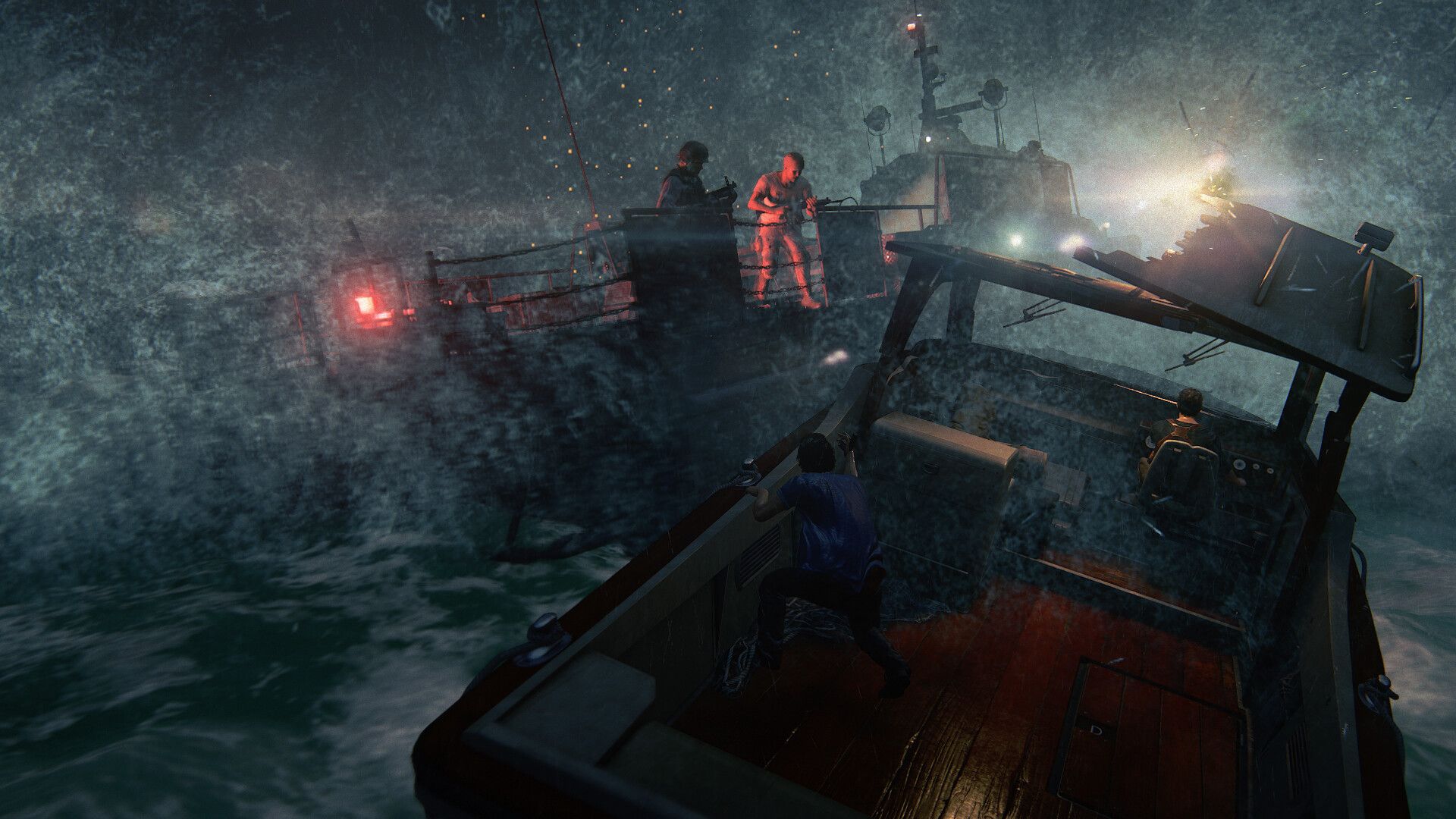At its heart, Uncharted 4: A Thief’s End is a story about family and sacrifice. It’s appropriate, then, that it begins with Nathan Drake sacrificing his brother, Sam. Some 15 years back, prior to the events of the original Uncharted, Nathan and Sam are working with wealthy treasure hunter Rafe Adler to find the lost treasure of legendary pirate lord Henry Avery. While locked up in a Panama jail, Nathan finds a clue that will lead the trio to Scotland where Avery’s ship was last seen. Before they can escape, the jail’s corrupt warden, Vargas, rounds them up and demands to be cut in. Rafe murders Vargas and the three rogues attempt a breakout. As they flee, Sam is shot in the back and falls into the darkness where Nathan cannot see whether he lived or died. As Rafe urges him onward, Nathan begrudgingly abandons his brother to make his escape and seek the fortune on his own. As the opening credits roll, we’re left wondering what happened to Sam, and reconciling this new information with the Nathan we’ve come to love and respect throughout the series.
But that isn’t actually the opening of Uncharted 4. We instead start some 15 years before that with the Drake boys in their teenage years. Nathan is living in St. Francis orphanage, but Sam has been kicked out for misbehavior. One night after helping him sneak out, Sam tells Nathan that he’s leaving town for a job and will be gone for a few years. Nathan is devastated by the news, and confused as to why Sam won’t bring him along. Before he goes, Sam tells Nathan he found out who bought their late mother’s belongings and the two set off to steal them back. This sets up the beginning of Nathan’s life of crime, but in the context of the prison break that comes next, it acts as a thematic counterweight. Both Drake brothers have abandoned each other in times of great need in order to pursue their own desires. When Nathan leaves his brother behind and possibly dead in the Panama jail in the next chapter, we have an understanding of the complexities of their family dynamic. Two full chapters is a lot to pack into an opening sequence, but it’s clear how these events are connected, and easy to imagine where things might go from here.
Except, that’s not the opening chapter of Uncharted 4, either. We begin in medias res at some point in the future with Nathan and Sam, who is very much alive, driving a boat towards an island. It’s stormy and the brothers are pursued by dozens of other boats filled with armed thugs that want to stop them from reaching the unnamed island for unknown reasons. As Nathan and Sam take turns driving the boat and shooting back at their pursuers, they are eventually rammed by a bigger ship and thrown overboard. There’s a cut to black before we then turn to teen Nathan in the orphanage.
Beginning a story at the climax is one of the oldest and most overused plot devices storytellers use to start things off with a bang. The Usual Suspects opens with the ship blowing up at the end, Reservoir Dogs begins with a heist gone wrong before we see how it happened, and Inception starts with Hobb waking up on the beach at the end. There are countless other examples of this trope in literature, film, and games, including Max Payne, God of War, Dragon Age 2, and even two other Uncharted games: Uncharted 2 and Golden Abyss. Uncharted 2 famously starts with the train crash sequence and over the next few hours shows us the events that led up to that incident. Uncharted 4 tries to pull the same trick, but immediately gets completely lost in the weeds.
In order of events, Uncharted 4 opens with a scene months in the future, then 30~ years ago, then 15~ years ago, before the credits roll and the story starts, in earnest, in the present. By the time you get through the orphanage stealth section, the climb into the ancient prison to find the crucifix, and the jail break, it's easy to forget that the five-minute boat race was the actual start of the game. In fact, by the time you actually see this sequence in context at the end of Chapter 12, you might not even remember that you’ve seen it before.
It feels like Naughty Dog just wanted to get a gun into the player’s hand immediately, and didn’t trust it could hold players’ attention through the orphanage sequence without giving them someone to shoot first. Beginning with the boat chase undermines the prison escape, since we know Sam is alive in the future before he seemingly dies in the past, and it doesn’t serve the story in any meaningful way. Compared to the train wreck from Uncharted 2, it doesn’t even stand up as an exciting action set piece moment, either. Functionally, it’s little more than a shooting and driving tutorial – two gameplay mechanics you won’t revisit for many, many hours.
Nathan doesn’t fire another bullet until nearly three hours into the game, during the escape from the auction house in Chapter 7: Lights Out. Giving the story time to breathe and develop is a bold choice for an action adventure game, but Naughty Dog should have committed to that decision instead of shoehorning a forgettable shootout into the prologue. It doesn’t help tell the story, and it isn’t even a particularly eventful moment even once we understand the full context. It only manages to set poor expectations for the pace of the opening hours, all for the sake of giving players a gun to shoot right away.
Source: Read Full Article
